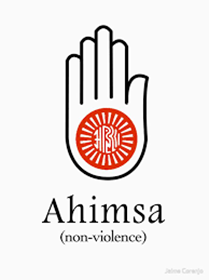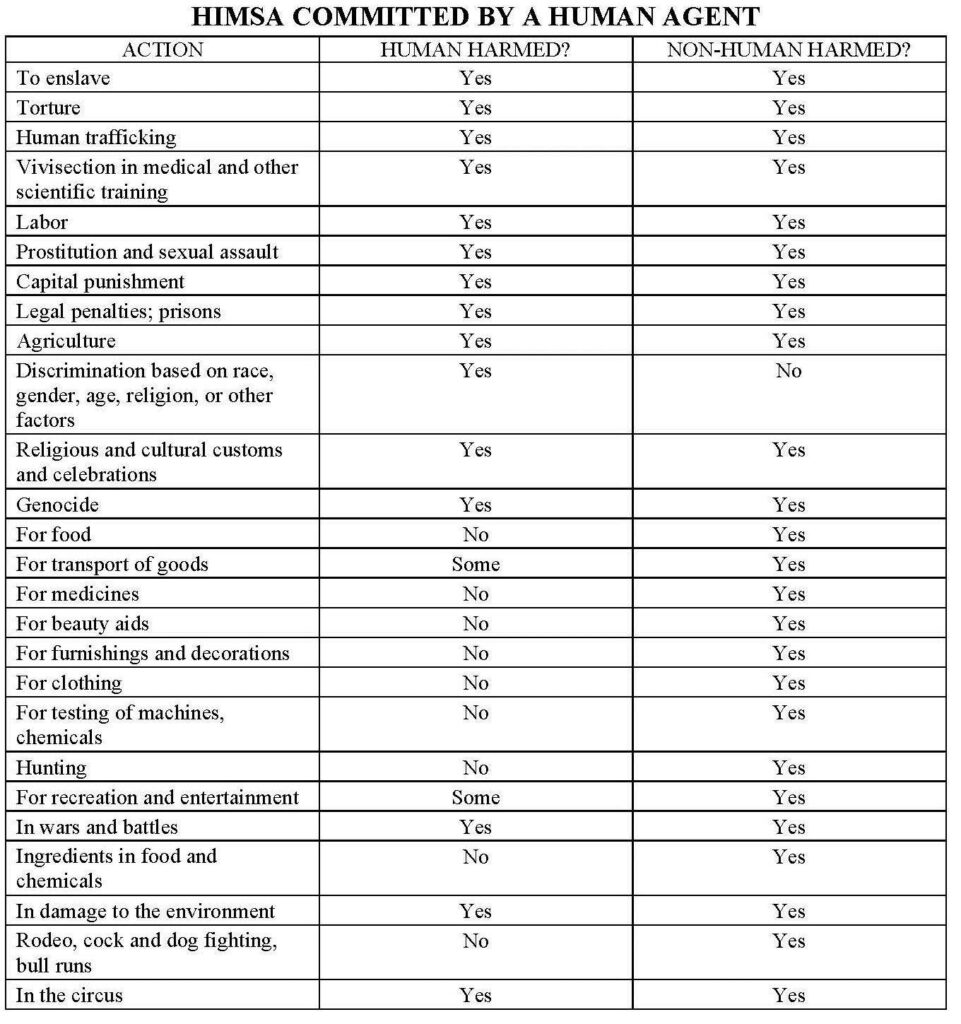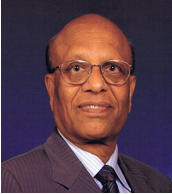A very inspiring poem
First, let me start this article with a beautiful and touching short poem by a 10-year-old Ms. Rutvi Shah (a Jain) from San Diego, California.
“I want to be Jain; I want to feed the hungry; I want to wipe the tears of the sad.
I want to give to the needy, I want to be Jain…
I want to push all the anger out of my heart; I want to make room for forgiveness instead
I want to ask for forgiveness for bad things I may have done, I want to be Jain…
I want animals to live and be free; I want people to understand animals are like us
I don’t want to use them for my needs I want to be Jain…
I don’t want to lie or cheat, I don’t want to take advantage of others
I want to be honest and truthful; I want to be Jain…
I don’t want to insist that I am correct, there are more than one right answer to a question
If I don’t insist, I am right, there will be no fights, I want to be a Jain…
Bhagwan Mahavir, let me walk on your path
The path that took you to liberation, let it take me there too
Let me spread love, peace, and joy
Oh, how I want to be Jain…oh how I want to be Jain!!!”
Wow, what a message from such a young girl! I hope there are thousands of such Rutvi’s in the Jain community.
Ahimsā; the most beautiful word
Mr. Philip Wollen (of Melbourne Australia), a world-renowned animal rights activist, a vegan, a passionate philanthropist, and a life devoted 24×7 to Ahimsā starts all his speeches with:
“The most beautiful word ever written anywhere in any language in any culture at any time in the entire history of the human race is Ahimsā”.
Several years ago, in a video series on India, Michael Woods of BBC said “Ahimsā is the biggest gift to humankind by Jain Dharma”
In Jainism, unconditional Ahimsā is called Parmo-dharma or supreme religion. Ahimsā is the jewel, the shining ornament, the Life Force, the heart, the Ātmā, the centerpiece, the central pole, and the foundation of Jainism. Jainism stands on the pillar of Ahimsā. In reality, Ahimsā and Jainism are inseparable, and they are the two sides of the same coin. Jainism is the dharma of Ahimsā and Ahimsā is Jainism.
Although other spiritual traditions incorporate Ahimsā, some more prominently than others, Ahimsā is the central focus of Jainism. Everything else in Jainism may be regarded as a footnote to that central principle. Professor Padmanabhan Jaini calls Ahimsā the “central concept of Jaina ethics. While all Indian philosophical schools attach great importance to this concept, none has carried it to the extreme of the Jainas. For them it is not simply the first among virtues but the virtue; all other restraints are simply elaborations of this central one.”
The wisdom traditions of the world offer pathways for humans to live with each other and with the natural world in a more peaceful and harmonious way. Among the religions, none has made the striving for peace more central, and none has called its followers to higher standards of Ahimsā, than Jainism.
According to Prof. Gary Francione of Rutgers University in USA, “Ahimsā as a spiritual concept concerns the state of the soul, or Ātmā, and says that we achieve Ahimsā only when the Ātmā is in a state of complete tranquility, or a state of being a Vitarāga, or free of attachment or aversion. If the Atmā is vibrating in any way, it is attracting karma, and whether that karma is good (punya) or bad (pāp), there is not—and cannot be—a state of Ahimsā. So, if we have not achieved liberation or moksha, we are necessarily participating in some form of Himsā. The teachings of Ahimsā refer not only to wars and visible physical acts of violence but also to the violence in the hearts and minds of human beings, their lack of concern and compassion for their fellow human beings and for the natural world. Ancient Jain texts explain that violence is not defined by actual harm only, for this may be unintentional. It is the intention to harm, the absence of compassion, that makes action violent. Without violent thought, there could be no violent actions. When violence enters our thoughts, we should remember, “You are that which you intend to hurt, injure, insult, torment, persecute, torture, enslave or kill. I consider the principle of Ahimsā to be the principle of democracy of existence of all life forms”.
The spiritual traditions of the world offer at their core a common call to compassion. Among them all, but Jainism in particular, offers wise councel to men and women in a world addicted to violence. The ancient Jain tradition, more clearly than any other tradition in humanity’s history, has placed the practice of doing no harm, Ahimsā, at the very center of attention. Through the ages monks and nuns, but also ordinary Jain men and women, have learned to recognize the roots of violence in their thought and action and, becoming enlightened, to take steps toward self-transformation. Jain teachings offer time-tested techniques for developing inner Ahimsā, until it fills one’s whole being and flows outward for the sake of all living beings.
An elephant saves the life of a rabbit
In Jain cosmology, animals also possess a moral and spiritual dimension. A favorite Jain tale relates to an elephant, the leader of a large herd, caught in a raging forest fire. Seeking shelter, all animals crowded around a lake, leaving no room for him to maneuver. After a while, the elephant raised one leg to scratch himself, and a small hare/rabbit swiftly occupied this tiny vacancy. Feeling deep compassion for the small animal, the elephant kept his leg raised for more than three days until the fire died out and the hare/rabbit





